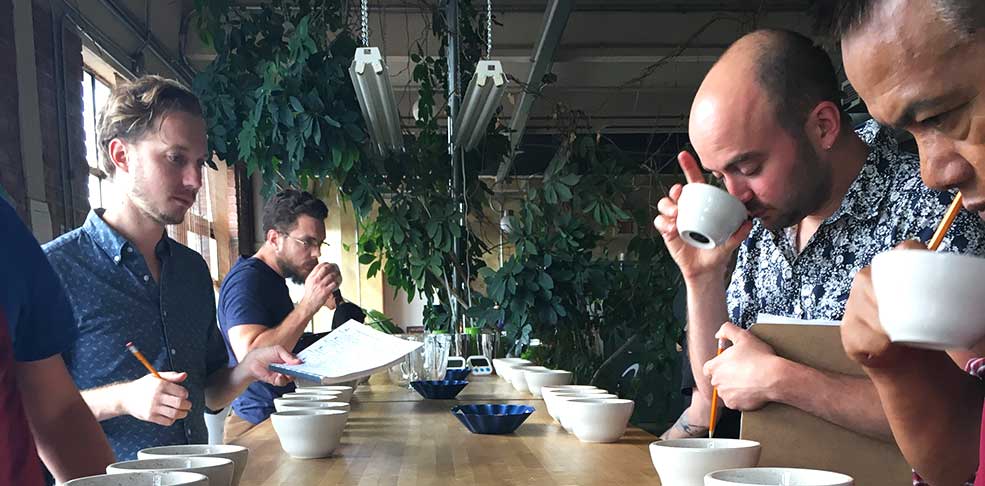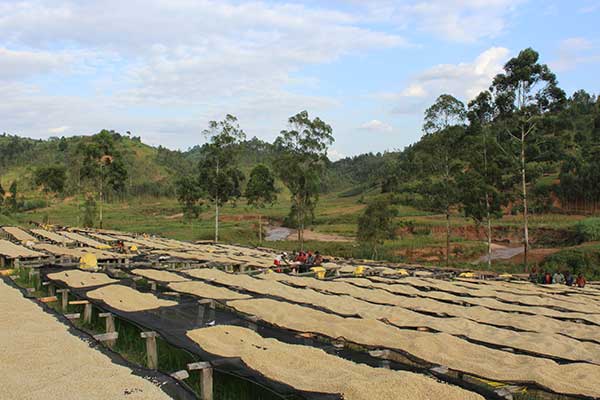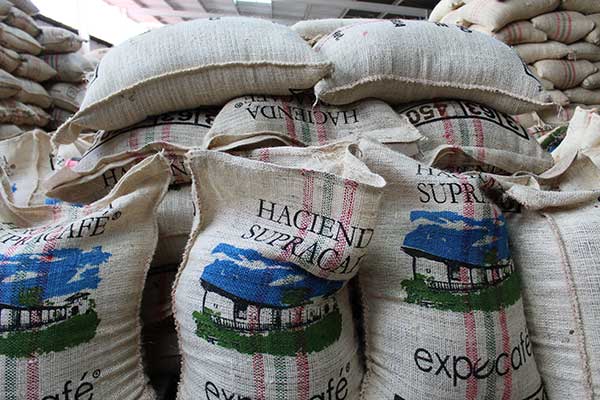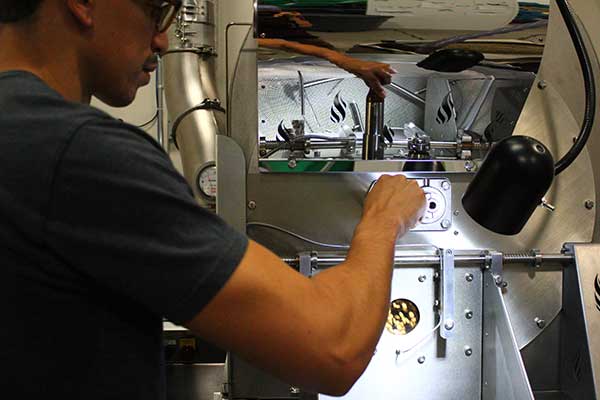A Closer Look At Coffee Quality
This is a Continuation of my first blog, “Navigating Coffee Sourcing Part I: Coffee Pricing”. I suggest taking a look at that before diving into this second section, to give a clearer outlook of the overall chain between grower and consumer.
Here we are taking a closer look at a topic that is at the core of the coffee industry: Coffee Quality. The concept of quality is an interesting one, as we use it to quantify the value of the product being served. In some cases, the price of coffee can be so high that a customer assumes its quality is greater than it really is. We also see this when a coffee is priced too low; a beautiful and unique coffee can be undermined because of its skewed perceived value.
For this reason, to objectively quantify a characteristic that is almost entirely subjective can be challenging. To make proper decisions that affect both the farmer and consumer, we must leave personal preference and opinions at the door before evaluating a coffee.
At the lowest level, coffee quality determines price differentials which dictate how much money a farmer will make for their harvest. At the highest level, coffee quality determines whether a customer enjoys what is in their cup each morning. The industry measures coffee quality at the farm, during cherry processing, between shipping and receiving, and during roast profile development of the finished product.
An Expectational Coffee Starts at Origin
An expectational coffee starts at origin. In order to achieve high quality coffee, there are specific environmental factors that only exist in mountainous regions around the equator. Stable year round temperature, high altitude, acidic soil and adequate balance of sunlight and shade are the foundations for growing great coffee.
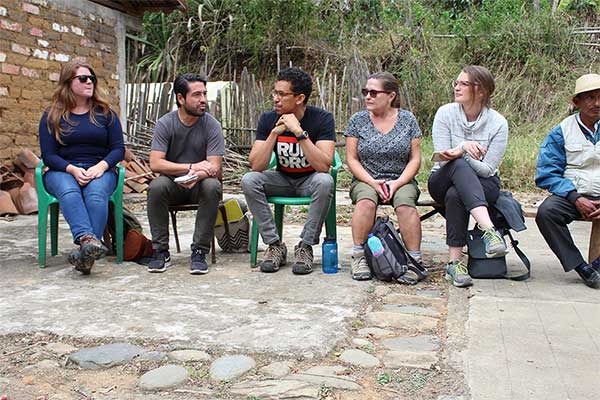
While some of these factors are out of a farmers control, there are many things they can do that influence the yield and quality of their harvest. Composting and increasing the health of their soil, selective pruning, and planting different varieties of coffee tree are all farm level quality initiatives that can have a big impact for the producer. When the coffee cherries ripen during their harvest cycle, selectively picking only the ripest cherries increases the size and density of the coffee seed inside, while allowing more complex sugar development. Even though a producer may have to hand pick multiple times using this method, the overall product is of higher quality and demands a higher price.
Processing High Quality Coffee
Since coffee is a fruit, and the coffee bean is the seed inside of it, producers must remove the pulp covering that seed before it can move further down the supply chain. In the coffee industry we see many different models for achieving this task. While there are many cherry removal processing methods (such as natural, honey and washed), I will focus solely on the washed process for the sake of simplicity.
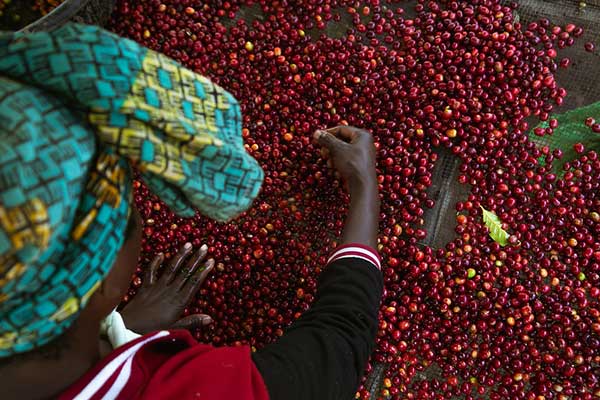
In general, we see depulping / dry fermentation at the farmer level in central and South America, and depulping/ wet fermentation at a centralized location called a “wet mill” in Africa. In both cases, depulping is achieved by cranking cherries through a machine that strips the pulp or mucilage off of the coffee seed. These depulpers can be very small hand cranked machines, or large scale industrial powerhouses.
Depulped cherries need to ferment to remove the remaining mucilage from the outside of the coffee seeds. In dry fermentation, the sticky seeds are simply placed in a large pile and allowed to cure without water. Farmers know when the fermentation has run long enough based on the consistency of the mucilage on the outside of the bean (this is sometimes tested with a stick: if the stick doesn’t sink into the pile, the fermentation is finished). In wet fermentation, the mucilage covered seeds are soaked in a large tub with cold water. While the two procedures are different, the goal is the same.
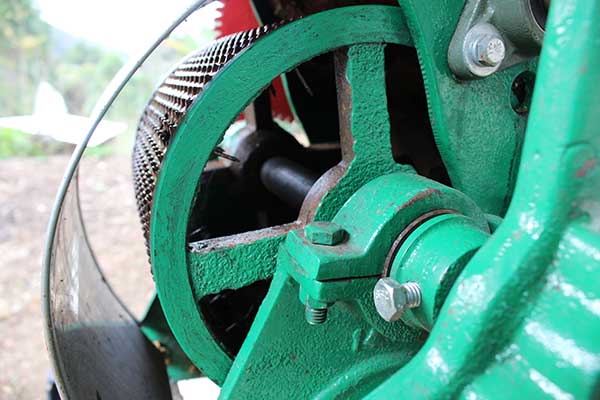
Fermentation is used to develop microbes that breakdown the mucilage on the outside of the coffee seed so that it will wash off easily. This is crucial for a high quality washed coffee. Once the coffee seeds are washed and completely clean of cherry pulp, the seeds are laid out to dry. Ideally, the coffee is dried on raised beds where oxygen can remove moisture from the top and the bottom of the coffee at the same time.
The coffee must be shifted back and forth to avoid unwanted fermentation that penetrates the skin of the seed. It must be dried all the way down to a moisture content between 9-11% before it is considered stable enough for export. This can take anywhere from a few days to 3 weeks, however studies are showing that prolonged drying tends to improve the stability of the coffee bean. Stability is very important because green coffee can sit for many months in different warehouses before it is roasted. The integrity of the coffee can be just as meaningful as initial quality.
Coffee Pricing, Export, and Evaluation
In coffee organizations that utilize a wet mill, farmers are paid based on the weight and quality of cherries delivered. In organizations where the farmers are dry fermenting the coffee themselves, they are paid based on the amount of quality dried “parchment” (coffee seeds that have not been hulled) delivered. All coffee is then hulled at a dry mill, where the parchment or pergamino (a layer of papery like skin on the outside of the seed) is removed by friction. Coffee is often stored at origin with this layer left on because it helps protect the seed inside, until it is ready to be hulled and exported.
When a producer or producer group’s coffee is processed and ready to sell, coffee buyers/ importers will evaluate pre-ship samples of the green coffee. This 200 gram sample is a theoretical representation of what the entire lot of contracted coffee should be. The coffee buyer will inspect the sample for defects, evaluate the size distribution of the coffee beans, take moisture and water activity levels, and evaluate the unroasted fragrance of the coffee. The pre ship sample is roasted, rested and evaluated in what is known as cupping (professional coffee sensorial evaluation). The coffees quality is scored by its aroma, flavor, aftertaste, acidity, body, and balance.
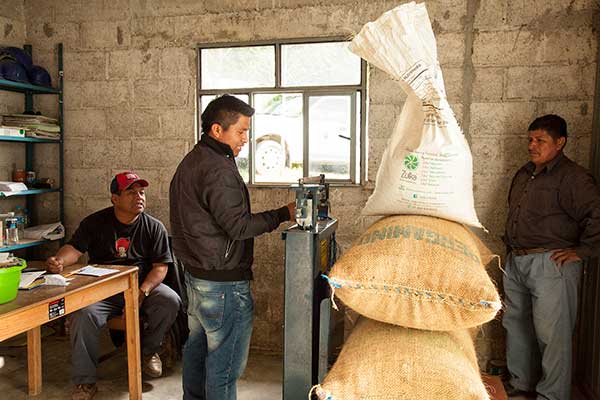
The overall analysis generates a score on 100 point scale, and the line on specialty coffee is generally drawn at 80+ points (most coffees that float around in specialty coffee shops range between 80-89 points). Based on the analysis of the green coffee, the current “C” coffee market price, and any premiums like Fair Trade or Organic certifications, the coffee exporter and importer will draw up a contract with an agreed price. This agreement is made with the caveat that the pre-ship sample is a representation of what the large shipment of coffee will be.
The coffee is then packed into a shipping container, which holds between 200-300 60-70 kilo bags (anywhere from 30,000-45,000lbs), and taken to the closest port at origin. The coffee makes a long voyage across the ocean to its designated port city, which can take anywhere from a few weeks to a few months.
Importing & Roasting The Best Organic Coffee
In the United States, the majority of coffee arrives in the country’s largest ports like New Jersey, Los Angeles, Houston and Seattle. Once the coffee lands at port, arrival samples are sent to the coffee importer. This “landed” sample is evaluated just as the pre- ship was, and if everything matches up, the coffee is approved and ready to make its way to the roasters that work with that respective importer.
Coffee is stored in large warehouses near port where it arrives until it is released by the importer to the roaster. Once the order is placed, it is palletized and shipped to the roaster by truck or rail. The coffee is cupped again upon delivery to ensure everything matches up with what all parties had been tasting along the supply chain.
Roasting Quality Coffee
From this point, the roaster begins to craft roast a profile. All the existing quality data from the coffees’ long trip is crucial for developing roast profiles that bring out the best the coffee has to offer. Altitude, Variety, Moisture Content, Water Activity, and Density all give clues on how a coffee will behave when it is roasted.
The first few roasts of a coffee are cupped many times, to evaluate how well balanced the acidity, body and sweetness are. The goal here is to create a versatile, well rounded coffee that is consistently delicious.
There are many different approaches a roaster can take to achieve this. Shortening the duration of the roast can increase acidity and decrease body. Increasing the temperature that the coffee is removed from the roaster increases caramelization. The important thing is that the roaster constantly tastes the initial roasts of a new coffee and adjusts his/her profile accordingly. Every coffee is different, so using the same profile or approach each time will result in unbalanced coffee offerings.
Once a roast profile is set, the roaster must try his/her hardest to match that profile every time the coffee is roasted. Customers expect consistency, and while tweaking roast profiles are important when working with a new coffee, making a coffee taste incredible only to never achieve that flavor profile again isn’t what we are looking for when we talk about quality. It is just as much about repeatability.
Quality Coffee Every Step Of The Way
Coffee Quality is dependent on the careful, meaningful attention taken by it’s farmer exporter, importer and roaster. A speed bump anywhere along the supply chain can greatly influence the finished product, and it is all the more reason for trusted relationships between coffee producers and coffee buyers.
The coffee itself is simply a commodity, with a set price and value. The relationships it creates between people around the world who otherwise may have never met, is truly where the most value and importance in the coffee industry resides.
Many coffee drinkers don’t think past what company they purchase their coffee from. Even fewer ask beyond what country their coffee was grown in. Hopefully with the information provided, readers can make more informed decisions about their coffee selections and understand the hard work that goes into an excellent cup of coffee.

